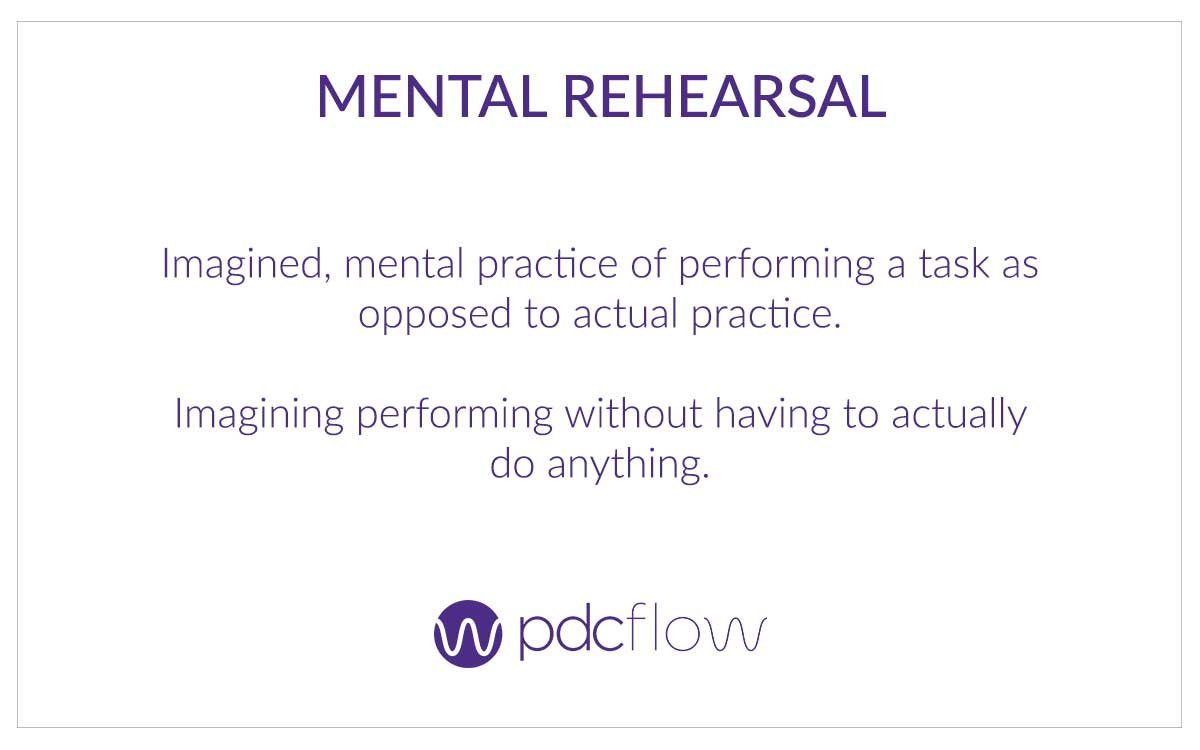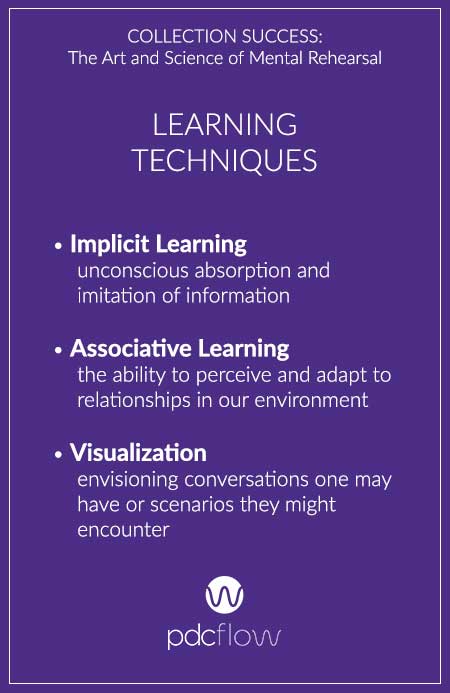What Mental Rehearsal is NOT
Before discussing what mental rehearsal is and how it can improve your collection practices, Hiller was careful to explain what the concept is NOT.
Some may confuse the practice with something called neuro linguistic programming. Hiller notes that NLP – a pseudoscience that has not been proven effective – has nothing to do with the practice of mental rehearsal.
What is Mental Rehearsal

Mental Rehearsal Definition
Why Use Mental Rehearsal in Debt Collection?
Why should front line collectors use mental rehearsal to improve job performance? Hiller explains that doing so can help agents to make sure they’re not overlooking important parts of their work.
By practicing mentally, people have been found to still gain the same benefits they would have from physically practicing the same activity. The added benefit, however, is the chance to catch mistakes and avoid real-world consequences of those mistakes. This way, those practicing this technique can work to improve while eliminating errors.

Learning Techniques
Implicit Learning
Associative Learning
Visualization (Perspective Taking)
Visualization, also known as perspective taking, can be done any time or place. It is done by envisioning conversations one may have or scenarios they might encounter and practicing the appropriate ways to respond.
This type of learning can help agents better understand those they interact with by considering the other person’s point of view. Hiller suggests when visualizing an audience, think about:
- What consumers want
- Who they are
- How they feel
- What type of circumstances they may be in
This type of learning can help agents practice conversations and even reverse how it might feel if they were the audience and someone was speaking to them this way. For debt collection, perspective taking is especially helpful in practicing empathy with consumers.
Empathy is an essential collection tool to build consumer connections and succeed in closing accounts. Hiller says that call scripts can help agents create these visualizations and practice having mock calls any time.
If your agency doesn’t provide scripts to work with, but agents still wish to use this tactic, Hiller suggests using knowledge and past experience to create your own.
Putting it All Together: Art and Science
Science of Collections: Proven Facts
Art of Collections: Putting it Into Practice
The art of collections is the practice of taking the scientific tools you’ve been presented, and implementing them in an elegant, natural flow during each consumer interaction. The better your collection science is, the more confidence agents will have to execute high quality consumer interactions and a consistent basis.
Using call scripts to guide mental rehearsal can help agents to prepare for consumer interactions while adhering to your agency's compliance guidelines. For more information on the benefits of call scripts, the elements they should contain, and more, download the Call Scripting for Debt Collection guide.






